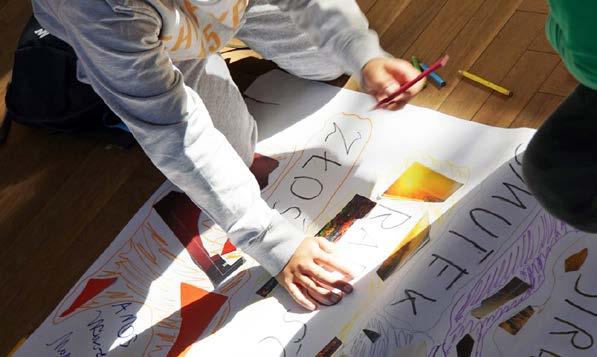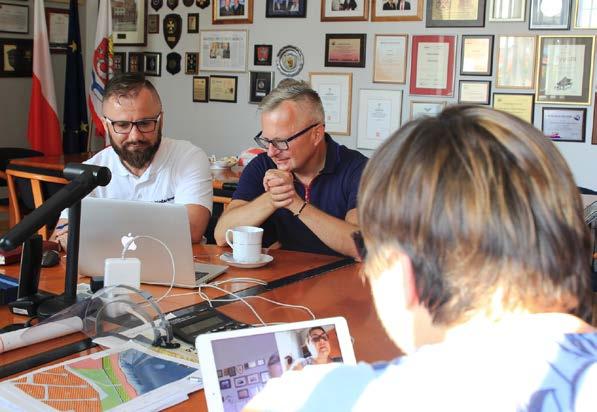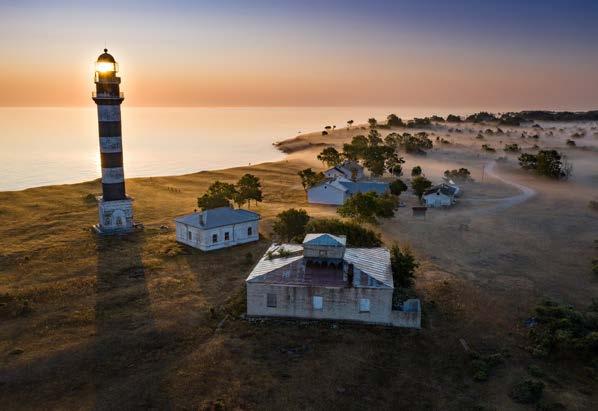
5 minute read
Entrepreneurial people in pandemic
ENTREPRENEURIAL PEOPLE
IN PANDEMIC
Advertisement
by Grażyna Pilarczyk | g.pilarczyk@gdynia.pl
Gdynia inhabitants are known to be entrepreneurial and able to cope with temporary difficulties. Even now, with the pandemic still ongoing, more companies are established than closed. Economic statistics give grounds for cautious optimism.
According to statistics, inhabitants of Gdynia are eager to set up companies. We can observe an upward trend: more companies are being entered in the register than removed. The specificity of Gdynia market is the prevalence of small, local companies, employing up to 9 people (97 % of all entities).
‘At the end of September 2020, there were over 42,000 companies in Gdynia. More than 1,100 new companies have been opened, while less than 500 have been closed since April. This upward trend has continued for many years’.
Another positive phenomenon is the fact that Gdynia has not experienced a dramatic wave of unemployment. In July 2020 the unemployment rate in Gdynia amounted to 3.1 % and was nearly 50 % lower than in Poland (6.1 %) or in the Pomeranian Voivodeship (5.5 %)’, says Deputy Mayor for economy Katarzyna Gruszecka-Spychała.
Shelters for business
Already on March 18, Gdynia announced help for entrepreneurs, consisting mainly of deferral or partial cancellation of local payments. Immediately after, different support programmes called “Gdynia storm shelters” were launched. The first one, “Storm shelter for Business”, provided support schemes for entrepreneurs. 265 entrepreneurs benefited from various kinds of exemptions and deferrals of payments proposed under the programme (as of the end of August 2020).
‘Many of them considered closing the business and dismissing employees already in the first days of the lockdown. That is why helping this group of inhabitants was so important. We have also launched free professional consulting services on a large scale. We helped not only to navigate through complicated government aid applications, but also in a wide scope of law, taxes, finances and development of business’, says Katarzyna Gruszecka-Spychala.
Different sectors working together to defeat the crisis
The Economic and Social Council for Adaptation to Life after Pandemic, composed of scientists, businessmen and third sector representatives, also operates in Gdynia. Together with authorities, the Council analyses economic situation and implements measures to limit the crisis.
It has, among others, conducted a survey on how the pandemic affected the business. The results helped to prepare optimum forms of support, but also to diagnose companies’ situation.
The results of independent rankings also prove that Gdynia is doing well despite difficult time. In this year’s Emerging Europe ranking Gdynia took fifth place in the “Quality of life” category.

WITH THE HELP OF A GAME?
by Marta Czarnecka-Gallas | m.czarnecka-gallas@pomorskieregion.eu

Walowy Square in Gdansk. Once a recreational area surrounded by impressive lindens and a representative fountain in its centre, a nice spot for a Sunday stroll. Today, no trace is left from the years of glory. The square does not encourage walks, neighbour chat or having a coffee with friends. There is, however, an interesting neighbourhood. It is close to the historic Lowland Gate, the Gothic towers and bastions of St. Gertrude and Zubr and the tourist centre of Gdansk.
Last year the Baltic Sea Culture Centre in Gdansk, one of the space, as well as the emotions they evoke.
This scenery serves as a perfect testbed for using culture and creativity to make living better in cities, which is one of the goals of Urb-Cultural-Planning, one of the flagship projects of the EU Strategy for the Baltic Sea Region (EUSBSR).
‘The project contributes to two of the overall objectives of PA Culture’, says the Policy Area Coordinator Anja Uhlenbrok and explains: ‘Through its support of cultural and creative SME’s and other cultural actors as well as its fostering of cross-sector cooperation between cultural and non-cultural in various contexts. Neither in our private lives nor in pubfelt bad in such an area and they intuitively wanted to beau-
actors (digital/technological, urban development, research, environmental) the project is contributing to the prosperity of the region and connects people in the BSR.
It will use culture as a driver for social and eco-friendly innovation. The project directly addresses the cultural and creative dimension of BSR as smart, inclusive and sustainable region’.
And one of the methods that can boost this process is citizen-driven cultural planning. But how to involve the citizens to take an active stance on some of the challenges that are faced by contemporary cities? One of the tools that are prodigital tool to engage young people in their local community.
posed and promoted by Urb-Cultural-Planning is gaming.
‘The game allows the youngest residents, most often left out in public decision-making, to be brought into cultural planCommunication Manager of the Project Consortium, and explains: ‘It explores their opinions in decisions that affect them and allows to receive and give information and ideas. By creating an opportunity for them to influence, shape, and design urban spaces, Minecraft has become a convenient tool to reach out for those who will only make their big decisions in cultural planning tomorrow’.
From the classroom to the street … and back to a computer lab
project’s partner organized a series of workshops with pupils of the 4th grade of the Primary School no 67 in Gdansk. With the assistance of a psychologist, architects and Minecraft experts, the pupils worked with different elements of urban
Equipped with the knowledge gained in class, the children went on a tour around Walowy Square and tried to map their emotions within the Minecraft model of this part of the city.
‘We talk very little about our emotions at school and in general’, says Magda Zakrzewska-Duda from The Baltic Sea Cultural Centre (BSCC). ‘And later we cannot express them lic space. Yet, we observed during the workshop with these 10-year-old kids that they have a very similar perception of the urban space, as we the adults. They didn’t like the dilapidated buildings and chaos of cars crowded all around. They tify it, revive it with greenery or a small ice-cream stand…It shows that everybody, no matter how old he/she is, needs aesthetics and this need should be cherished, not muted’.
It is not only in Gdańsk that Minecraft is intensively used as a ning in their own neighbourhood’, claims Martinš Engelis,
Within Urb-Cultural-Planning, similar activities are undertaken by Riga City Council.










